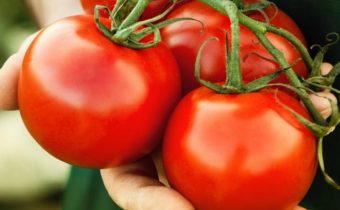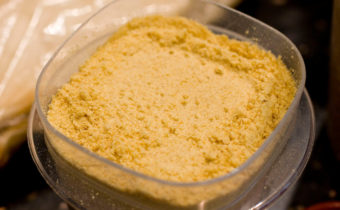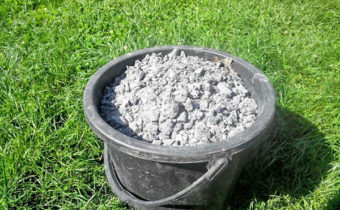Important secrets of the "right" ash for fertilizing plants

Ash is a free and effective fertilizer for vegetables. It can be quickly prepared with your own hands from various raw materials. For maximum benefit from use, you need to properly store and apply to the soil. The consumption rate and frequency of application should be chosen in accordance with the characteristics of the crop, the phase of plant growth. It is necessary to take into account the mechanical and chemical composition of the soil in the garden, in the garden.
Types of ash
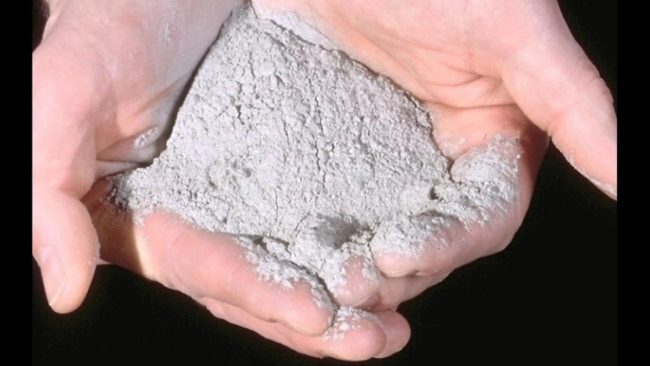
Ash can be vegetable, wood and coal. Its chemical composition depends on what was burned:
- firewood;
- plant residues;
- brown or black coal.
Most of it contains potassium, phosphorus and calcium - those elements that are necessary for the growth and development of any garden and garden crops. Therefore, what remains from the combustion of organic substances (firewood, plant residues) is used as fertilizers.
In addition to calcium compounds, carbonate (CaCO₃), silicate (CaSiO₃), sulfate (CaSO₄), chloride (CaCl₂), potassium - orthophosphate (K₃PO₄), and phosphorus (P) in ashes are:
- magnesium - carbonate, sulfate, silicate;
- sulfur;
- iron;
- manganese;
- sodium compounds (sodium chloride, orthophosphate).
Comment!
Nitrogen in the ashes is absent, it disappears when burned.
All the beneficial substances are available for plants. Their concentration depends on what is burned.
|
Element |
Straw | Firewood |
Sunflower |
||
| Cereals | Buckwheat | Hardwood | Conifer | Stems | |
| Calcium (%) | 4-8 | 18,5 | 30 | 35 | 18 |
| Potassium (%) | 10-20 | 30-35 | 10 | 10 | 35-40 |
| Phosphorus (%) | 4-8 | 2,5 | 3,5 | 3,5 | 2,5 |
In coal ash obtained from the combustion of coal, there are very few useful substances, they are in hard-to-reach form for vegetable and horticultural crops (silicates). It is introduced into clay soil (not acidic), improves the structure and breathability. It responds well to:
- swede;
- radish;
- legumes;
- bow;
- cabbage;
- garlic.
Beneficial features
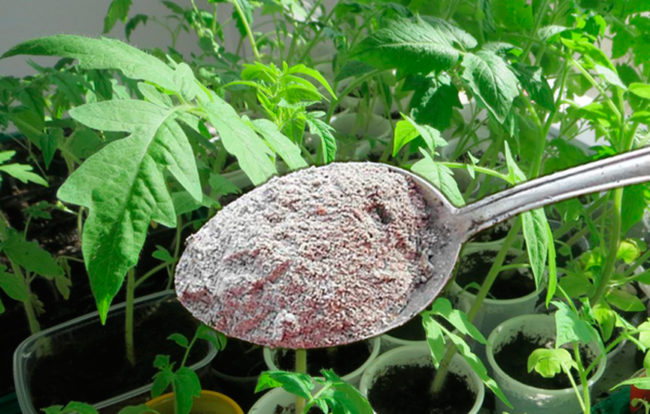
At the beginning of the growing season for plants calcium is important. It affects the growth of green mass, especially needed for vegetables, which have formed over the summer powerful aboveground parts: pumpkin, cucumber, tomato.
| Chemical compound | Action on the plant |
| Calcium carbonate | Activates biochemical processes |
| Calcium silicate | Improves nutrient absorption |
| Calcium sulfate | Prolongs fruiting, positive effect on the formation of the root system |
| Calcium chloride | Improves photosynthesis, affects the production of enzymes, increases the winter resistance of grapes, fruit trees |
Antifungal properties of CaCl₂ are used when storing crops of apples, potatoes, carrots, treating diseases of roses (black leg), strawberries, grapes, and tomato.
Potassium orthophosphate, which is part of the ash, normalizes the water balance in plant tissues, increases the winter resistance of perennial crops, creates an alkaline environment that is favorable for the growth of flowers (rose, chrysanthemum, lily). Sodium compounds activate the synthesis of enzymes, normalize the water balance, magnesium is involved in carbohydrate metabolism.
How to get and store wood ash
Ash can destroy plants if, when burning wood waste, leaves, dry tops, plastic products, rags, shoes, other non-vegetable garbage are added to the fire. Ash will become toxic.When it is introduced into the soil, harmful substances (salts, heavy metals) will harm the vegetables, affect the quality of the soil.
Not all wood is suitable for ash. Not suitable boards:
- impregnated with special liquids (impregnation);
- painted or varnished;
- with traces of mold.
Do not throw cardboard into the fire. In addition to wood fibers add chemicals. The ash obtained from burning wood chip materials (chipboard, WWS) will not bring benefit.
When wood is burned in the stove, ash is produced, and in the fire ash and coal are produced. In the garden you can use both products of combustion. The powder obtained when sifting is used for the preparation of liquid and dry fertilizers, pour the charcoal into the compost pile.
During the summer season from the bath, the barbecue accumulates a lot of ash, the question arises how to store it. In conditions of high humidity, it will quickly lose all its beneficial properties. Water and snow wash out potassium and other trace elements.
For storage you need a dry utility room and an airtight container:
- durable garbage bags;
- bags;
- any plastic containers with lids.
Comment!
In an airtight container, useful properties are retained for 4 years.
When you can and can not use ashes
To understand that the plant will benefit from ashcan be on the signs that talk about calcium deficiency:
- whitened and deformed leaves in houseplants;
- fallen buds in tomatoes, peppers, eggplants;
- dark brown spots on the fruit of a tomato;
- fruit tops of young shoots die off;
- necrotic spots on potato tubers and stems.
Ash can not be made under crops that grow better on acidic soils. You can not wait for large root vegetables, if you make it for radish, turnip, radish. These vegetables will react to such feeding with arrowhead.
Stop flowering and stop growing:
- azalea;
- rhododendron;
- camellia.
Do not use ashes, if in the garden and in the garden the soil is alkaline - pH value> 7. Most often it is clay and solonets soils. Its introduction will not be beneficial, it will cause chlorosis, because it complicates the absorption of magnesium, iron, phosphorus.
Benefit for acidic soil
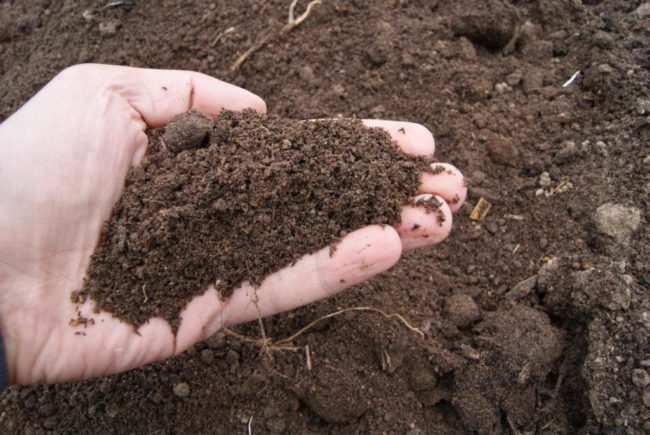
With intensive use of the earth, regular use of mineral fertilizers, the acidity of the soil increases. At pH <5.5, the nutrients needed by plants (potassium, calcium, magnesium) are washed out of the soil, phosphates are poorly absorbed, and soil bacteria cease to decompose organics.
Reference!
The introduction of ash under the potato increases the starch content in tubers, increases yield.
Bringing wood ashes, neutralize the acidic soil. Follow the rules:
- do not contribute simultaneously with superphosphate, ammonium nitrate, urea, fresh manure;
- bring simultaneously with humus and peat, increase their efficiency;
- in the spring they bring in peat and sandy soil, in autumn - in clayey.
How to use the ashes in the garden and in the garden
Ashes can be fertilized with vegetable, flower and garden crops grown on soil with a neutral and acidic reaction. It does not contain chlorine compounds, so raspberries, strawberries, currants, potatoes react well to it. It is used for the prevention and treatment of diseases.
Liquid fertilizer
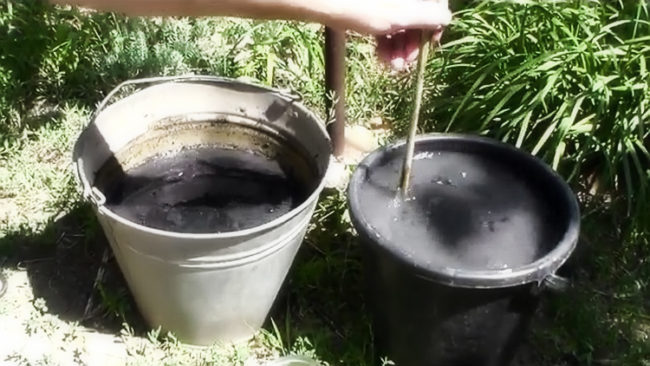
The recipes feature measures of ash: 1 ct. l - 6 g, 1 st - 100 g, liter jar - 500 g. Liquid ash solution for foliar dressings can be prepared with a reserve, stored in a cool place for about a month:
- water - 3 buckets;
- ash - 3 kg;
- insist 3 days;
- diluted with water 1: 5 before use;
- as a sticky add laundry soap (chips).
For feeding tomatoes insist in 5 liters of boiling water 2 liters of powder. After cooling, add 5 l of distilled water, 10 g of boric acid, 10 ml of iodine. The concentrate is diluted with water 1:10 before use. Consumption rate on 1 bush - 1 l.
Dry fertilizer
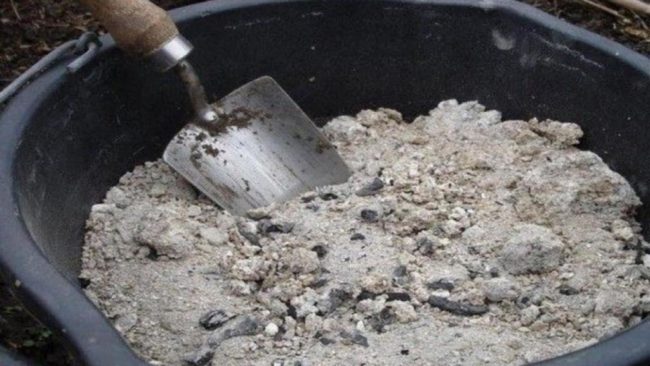
The rate of making ash for each vegetable its own. It is added when preparing the ridge to the ground and when transplanting seedlings into holes.
| Culture | Under digging for 1 m² | Into the hole |
| Zucchini |
1 st |
2 tbsp. l |
| Squash | ||
| Cucumbers | ||
| Tomatoes |
3 st |
1 handful |
| Pepper | ||
| Eggplant | ||
| Cabbage | 2 st | 1 handful |
| Bow | 2 st | — |
| Garlic | 2 st | — |
| Potatoes | 1 st | 1 handful |
For soil deoxidation, ashes are applied once every 3 years from 300 to 500 g / m². The soil structure is improving, favorable conditions are created for the development of soil microflora, this contributes to higher yields.
Pest ash
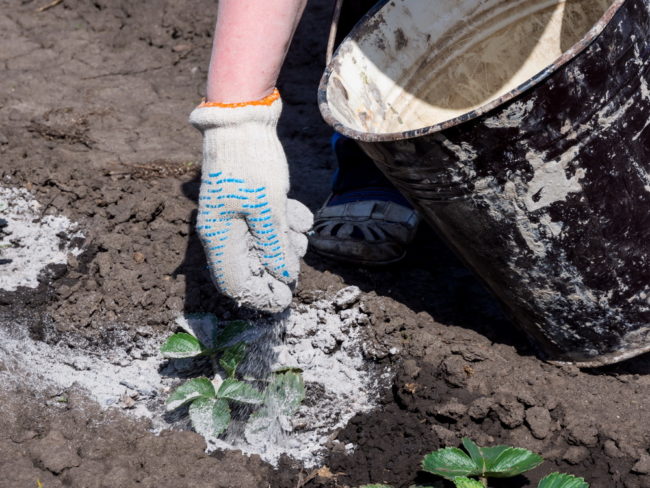
Ashes can be replaced by insecticides. It is used in the garden and in the garden for pest control. They sprinkle soil on it, prepare solutions, use it to scare away, destroy adult insects and their larvae. To protect the bed from slugs, it is not sieved, sprinkled with unburned embers around the perimeter.
On raspberry
Raspberry beetle is the most dangerous pest of culture. Adults overwinter in the soil, lay eggs in blooming flowers during flowering. The larvae spoil the harvest, feeding on the pulp of the berries. To protect against insects, soil under bushes is sprinkled with a mixture of ash and tobacco dust. They are taken in equal quantities. Processing is carried out throughout the season.
On the gooseberry and currants
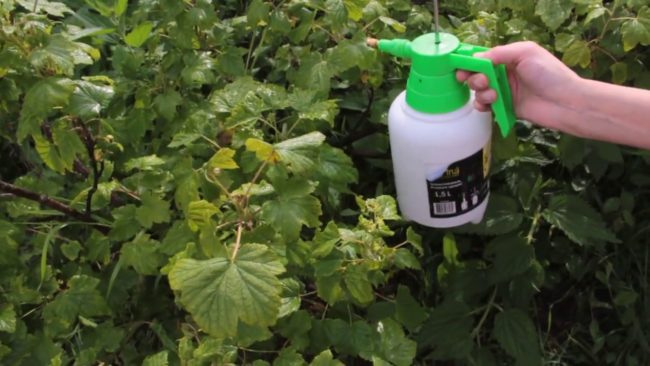
Infusion sprayed the bushes from the moth, sawfly and aphids. At 10 liters of boiling water take 2 tbsp. powder infused for 2 days. The treatment is carried out in the evening in dry, calm weather:
- from ognevka - during the ripening of berries;
- from aphids - at the first symptoms of infection;
- from sawfly - in the budding phase.
On an apple tree
From the moth of an apple tree in the phase of opening the kidneys are treated with a solution prepared from 10 liters of water, 50 g of soap and 1.5 kg of wood ash, it can be used from other pests:
- aphid;
- ognevka;
- hawthorn
From carrot and onion flies
The ash is sieved and mixed with tobacco dust. Take equal amounts of both. A mixture of sprinkled beds with onions, carrots, cabbage. It repels onion and carrot flies, cruciferous flea beetles.
Disease Ash
A natural remedy derived from the combustion of firewood has fungicidal properties - it destroys the fungal infection. Gardeners use it for the treatment and prevention of powdery mildew, keels on cabbage, black leg in seedlings. For spraying prepare infusion:
- water - 10 l;
- ash - 1 tbsp.
On strawberries
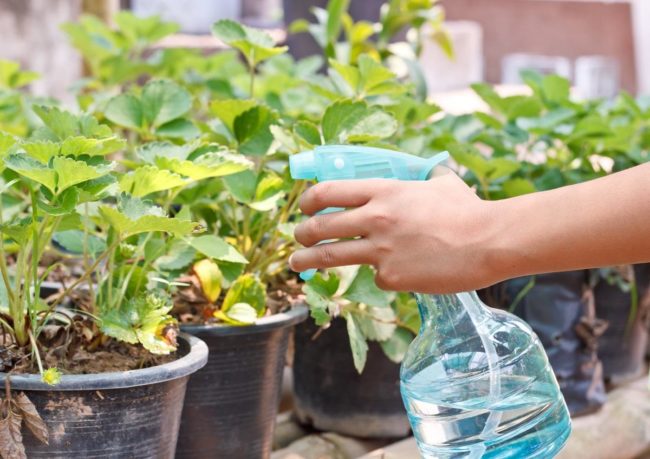
From gray rot prepare multicomponent solution. To handle an area of 3 m² take:
- water - 10 l;
- copper sulphate - 1 tsp;
- chalk - 1 tbsp;
- wood ash - 1 tbsp.
The composition is sprayed with leaves and soil of strawberries at least 2 times. In the same way it can be used from brown spot and to prevent fusarium wilt.
On the bow
Onions protect against root rot in 2 ways. Sprinkle the soil with dry fertilizer before watering, use the infusion. Prepare it in a certain proportion:
- water - 3 l;
- ash - 3 tbsp. l
Means insist at least 7 days. Onions for the season watered 3 times.
For composting
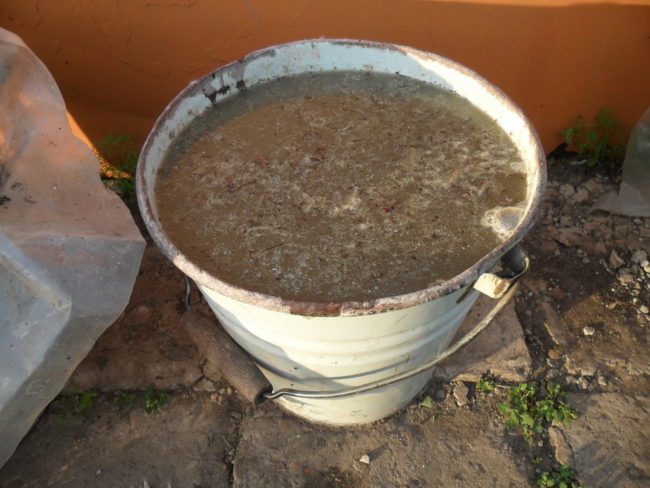
At the economic gardener everything goes in business. Plant residues - tops, leaves, too. They make organic fertilizer - compost. In the corner of the garden, a composting box is made of planks and bars, or of plastic mesh. All vegetable waste is thrown into it.
Comment!
Ash enriches compost, accelerates its ripening.
After complete overblown, they turn into organic fertilizer. To increase the concentration of micro-and macroelements, sifted wood ash is added to it. Approximate consumption 2-3 tbsp. per square meter thickness of 20-25 cm.
Wood ash for cucumbers in the greenhouse and vegetable garden
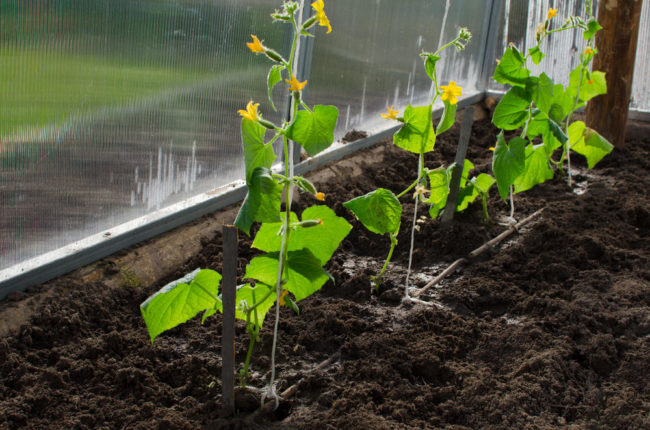
Cucumbers love abundant watering, but the soil is acidified from them, compacted. The nutrition of the roots is deteriorating due to lack of air, ideal conditions are created for the vital activity of fungi. For the prevention of root rot in the greenhouse and garden, cucumbers are used to make ash, it lowers the acidity.
Comment!
Ash falling on the leaves of cucumber does not harm the plant. It discourages pests.
You can use the product 3-4 times per season. Sprinkle around the bushes before the next watering.To feed and normalize the pH level, add 100 g / m².
Tips from gardeners
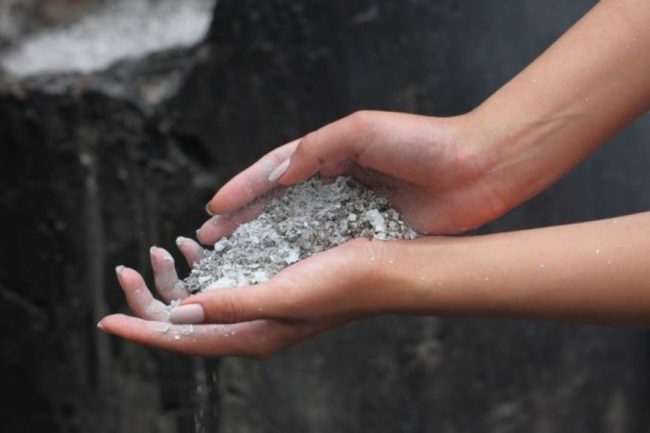
In early spring, ash is used in the garden and in the garden. It is poured where they want to make a bed for sowing cold-resistant crops and on ice-covered garden paths. The snow and ice beneath it melt quickly. In spring and autumn, ash fertilizer is spread on the lawn. Top dressing promotes grass growth, makes the color brighter.
From garden works, the skin of the hands deteriorates. For its restoration and clarification helps folk remedy based on ash:
- warm water - 1 l;
- ash - 3 tbsp. l;
- sea salt - 1 tsp.
Hands hold in the bath for 15-20 minutes. The skin becomes lighter, softer.
With the help of ash, gardeners improve the agrochemical properties of the soil, increase yields, and fight against pests. The desired results are achieved while observing the norms and terms of natural fertilizer application.


